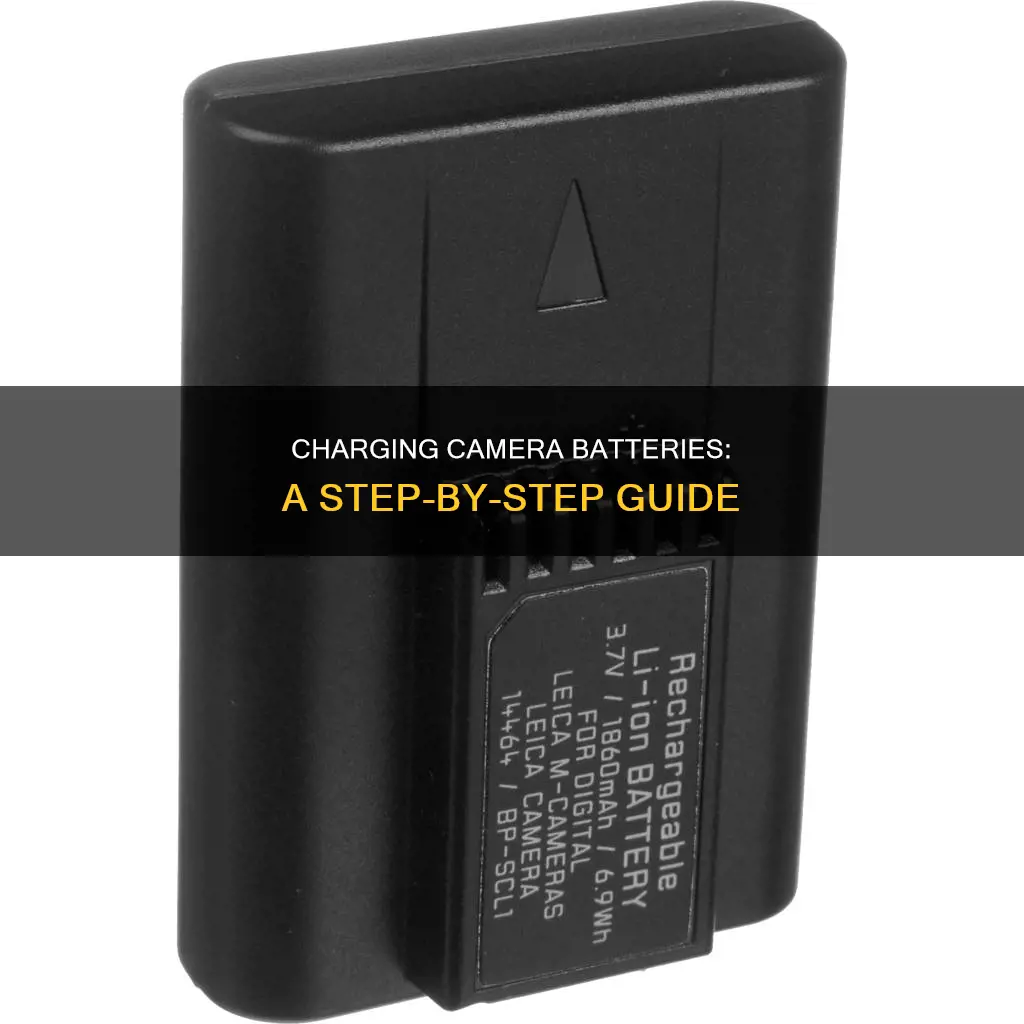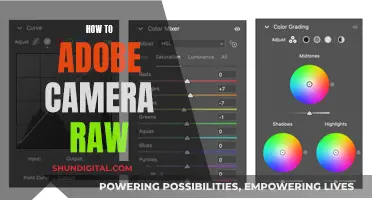
Charging lithium-ion batteries is a topic that has sparked some confusion among camera users, with conflicting advice from manufacturers' manuals and online articles. One common question is whether to fully charge or deplete lithium-ion batteries before storing them for prolonged periods. While some sources recommend bringing the battery to about half charge before storage, others suggest depleting and removing it from the camera to prevent shortening its life. Another concern is the voltage threshold for charging, as some chargers only recharge to 4.05V/cell instead of the full 4.20V/cell to prolong battery life. Additionally, there are varying opinions on whether batteries need to be completely depleted before charging, with some users reporting issues with new batteries not holding a charge. Understanding the nuances of charging lithium-ion camera batteries is essential for optimizing battery performance and longevity.
What You'll Learn

Before prolonged storage, charge to 50%
Before storing your lithium camera battery for a prolonged period, it is recommended that you charge it to 50% to reduce self-discharge and active material degradation. This is because storing a lithium-ion battery for long periods without depleting it may shorten its life.
Lithium-ion batteries are different from other types of batteries, such as NiCad and NiMH, in that they cannot accept an overcharge. This means that they are more susceptible to damage if they are not properly charged before storage.
To ensure the longevity of your lithium camera battery, it is important to follow the manufacturer's instructions for charging and storage. Before storing your battery for an extended period, make sure to refer to the manual that came with your camera or battery. In some cases, the manufacturer may recommend storing the battery at a lower charge, such as 40% or even 20%.
Additionally, it is important to note that the temperature at which you store your lithium camera battery can also impact its longevity. It is recommended to store lithium-ion batteries in a cool, dry place, as heat can be damaging. However, freezing temperatures should also be avoided, as this can cause dendrites (crystallization) in the electrolyte components, leading to separator damage or material bond degradation.
Charging Your Fujifilm Waterproof Camera: A Step-by-Step Guide
You may want to see also

To store long-term, deplete and remove
To store your lithium camera battery for a prolonged period, it is advisable to first deplete and remove it from your camera. Storing a lithium-ion battery for long periods without depleting its charge may shorten its life.
Before placing your battery in storage, ensure that it is clean and free from any dirt or debris. Use a soft, dry cloth to gently wipe the battery surface. Inspect the battery for any signs of damage or swelling, and if you notice any abnormalities, discard it following the appropriate guidelines.
The recommended charge level for long-term storage is around 40% to 50% State of Charge (SoC). This charge level helps maintain the stability of the battery and prevents overdischarge during storage. Avoid storing your lithium-ion battery fully charged or fully depleted.
Additionally, ensure that you disconnect the battery from any devices before storing it. This will prevent unintentional drainage and ensure the battery remains stable. It is also advisable to remove spare batteries from devices to prevent potential leakage or damage in case of battery failure.
Simplesafe Camera Costs: Monthly Fees or One-Time Payment?
You may want to see also

Charging via a laptop can distort the cycle
When charging a lithium-ion battery, it is important to consider the potential impact of parasitic loads. A parasitic load is the current drawn through a portable device that is in the ON position while charging. This can distort the charge cycle by confusing the charger and preventing the current in the saturation stage from dropping low enough, as it draws a leakage current.
Laptops connected to the AC main are a common example of a parasitic load. In this case, the battery might be charged to 4.20V/cell and then discharged by the device, causing voltage-related stress and potentially shortening the battery life. To avoid this, it is recommended to turn off portable devices while charging to allow the battery to reach the set voltage threshold and current saturation point unhindered.
Additionally, fast chargers that deliver short on/off cycles in excess of 10 amps can also be harmful to Li-ion batteries, as they cause the battery to heat up. While universal laptop chargers with selectable voltages may be a better alternative, it is important to ensure that the voltage is set correctly to avoid overcharging.
To prolong the life of a lithium-ion battery, it is recommended to charge at a slower rate of 0.8C or less. While this may take longer, it is safer and puts less stress on the battery. It is also important to note that lithium-ion batteries cannot absorb overcharge, so it is crucial to cut off the charge current when the battery is fully charged to avoid safety hazards.
By understanding and mitigating the impact of parasitic loads, using appropriate chargers, and following manufacturer recommendations, you can help ensure your lithium-ion camera battery maintains its performance and longevity.
Charging the iForce Camera: A Step-by-Step Guide
You may want to see also

Voltage shoots up quickly when first charging
When you first start charging a lithium-ion camera battery, the voltage rises rapidly. This initial behaviour is typical of all batteries and can be likened to lifting a weight with a rubber band, resulting in a lag. The capacity eventually catches up when the battery is almost fully charged. The higher the charge current, the more pronounced this rubber-band effect becomes. Cold temperatures or charging a cell with high internal resistance can amplify this effect.
The rapid voltage increase during the initial charging stage can be attributed to several factors. Firstly, it is important to understand that charging and discharging batteries involve chemical reactions. In the case of lithium-ion batteries, the movement of ions between the anode and cathode plays a crucial role. When a battery is being charged, the kinetic energy required to create and move these ions contributes to the voltage rise.
Another factor influencing the quick voltage increase is the internal resistance of the battery. The effective internal resistance of internal connections and electrolyte resistance impacts the terminal voltage. Additionally, as the battery nears full charge or full discharge, it becomes more challenging to find available molecules to convert to meet the current demand, leading to a rise in kinetic voltage.
It is worth noting that excessive charging current can also cause the voltage to rise faster than expected. This occurs because the battery cannot cope with the available current, and the chemical reactions cannot keep up. Aged, sulphated, or dry batteries, among other factors, can exhibit this behaviour without taking on much charge.
Rapid Charging: Powering Your Camera in a Flash
You may want to see also

All lithium-based batteries are safer at a lower charge
To charge a lithium-ion camera battery, it is important to understand the specifics of these batteries and how to ensure their longevity and safety. All lithium-based batteries are safer at a lower charge, and there are several reasons for this. Firstly, a lower charge voltage prolongs battery life. While a higher voltage boosts capacity, it also stresses the battery and shortens its service life. This is because, at elevated temperatures, a fully charged battery is at its worst, and lower temperatures prolong battery life.
Lithium-ion batteries are unique in that they have a higher voltage per cell and tighter voltage tolerances. They do not accept overcharging, and it is crucial not to exceed the specified voltage, typically 4.20V/cell for most consumer devices. Exceeding this limit compromises safety and reduces the battery's lifespan. Lowering the charge voltage, therefore, helps to maintain safety and prevent overstressing the battery.
The optimal charge voltage for lithium-based batteries is 3.92V/cell, according to battery experts. While going lower may not provide additional benefits, this threshold eliminates all voltage-related stresses. This lower voltage is favoured by industries prioritising longevity over maximum capacity, such as electric vehicles and satellites.
To ensure the safety and longevity of lithium-ion camera batteries, it is advisable to follow the manufacturer's guidelines for charging and storage. Keeping the batteries at a lower charge, when possible, can help prolong their lifespan and reduce safety risks.
Charging the DSC-S780 Camera: A Step-by-Step Guide
You may want to see also
Frequently asked questions
You can charge your lithium camera battery using a compatible charger. Some chargers will indicate that the battery is fully charged by displaying "Ready".
It is recommended to recharge your lithium camera battery when the camera displays a "low battery" symbol in the viewfinder.
The lifespan of a lithium camera battery depends on various factors, such as usage and storage. Proper care can help prolong its life.
Yes, it is generally safe to charge your lithium camera battery via USB using the provided cable or a suitable alternative.
It is not necessary to completely deplete your lithium camera battery before recharging. However, some camera manuals recommend depleting and removing the battery for long-term storage.







